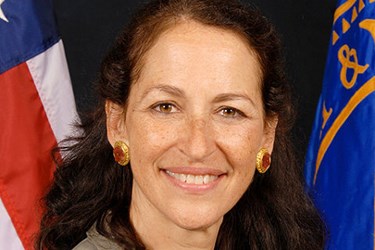Driving Innovation Is A Key Part Of Our Mission

By Margaret A. Hamburg, Commissioner of the Food and Drug Administration
Ensuring the safety of the food supply and the safety and effectiveness of drugs, devices and biologics has always been at the core of FDA's responsibility to protect the public health – and always will be.
But what is often lost or neglected in discussions about FDA's vigilance on behalf of consumer and patient safety is how this kind of oversight and regulation, when done right, can be a key driver of innovation throughout society. Whether it involves the development of some remarkable new drug or oversight of a particular product, the addition of rigorous regulatory science from FDA helps to safeguard the safety and effectiveness of innovative new products; ensures that these scientific achievements quickly reach their full potential; and builds a pathway for ongoing innovation. That's why we continue to adapt and change regulatory policies in response to – and in anticipation of – scientific opportunities so that they can best be harnessed to improve health and medical care.
There are many recent examples of this thoughtful approach to innovative products. For instance, we have put in place a new breakthrough pathway to market for promising drugs that may offer a substantial improvement over available therapies for patients with serious or life-threatening diseases. Using this new approach, we have already approved two treatments for rare types of cancer and one for hepatitis C. And there may be considerably more in the weeks and months ahead because many companies have expressed interest. So far we have received 119 requests for designation and granted 35.
In a very different realm, another example is mobile medical apps. We took a measured and sensible approach that promotes innovation when we finalized guidance related to these devices earlier this year. Although many mobile apps pertain to health, CDRH intends to focus its oversight on a very small subset of those mobile apps that are medical devices. We have called that subset "mobile medical apps" and we are approaching their regulatory oversight within a risk-based framework. We believe this approach will promote innovation while protecting patient safety by focusing on those mobile apps that pose greater risk to patients.
As explained in the final mobile medical application guidance, our regulation of software as a medical device – and a mobile app is software – is based on risk and functionality, and that functionality should be treated the same regardless of the platform on which it is used. For example, an electrocardiography device – an ECG machine – that measures heart rhythms to help doctors diagnose patients is still an ECG machine regardless of whether it is the size of a bread box or the size of a smartphone. The risks it poses to patients and the importance of assuring for practitioners and patients that it is safe and effective are essentially the same.
And, just a few weeks ago, we authorized for marketing four innovative gene-sequencing devices. Two of these products comprise a system that allows laboratories to develop clinical tests that can look at a person's genetic makeup and detect abnormalities that could be responsible for illness. FDA realized the innumerable uses of these systems from the outset, and rather than focusing on specific diseases or areas of the genome, we took a tool-based regulatory approach. We assessed whether the devices overall measure what they are intended to measure accurately, reliably and precisely so that there can be greater confidence in the test results. These types of genome sequencers represent a significant step forward in the ability to generate genomic information that may ultimately improve patient care.
Each of the new medical products we approve and usher to the market involves a balancing of risks and benefits, which is based on study and evaluation of hard data and the best available science. It is a huge responsibility that FDA is charged with, nowhere more so than when dealing with unfolding technologies that offer enormous potential – but that also may present real risks for people and their health.
We know there will be new and continuing challenges that arise with additional technological developments and advancements in science and medicine. This is why FDA's regulatory role in these emerging areas continues to develop as well, sometimes even as the technologies themselves are taking shape
But our goal remains constant – to protect the public health through smart regulation that helps to enhance innovation and ensure that new medical technologies have real value to the people who will use them, and that they are used effectively and safely to address their needs.
This blog post originally appeared on FDA Voice, the FDA's official blog brought to you from FDA's senior leadership and staff stationed at home and abroad — sharing news, background, announcements and other information about the work done at the FDA on behalf of the American public.
